What is pigmentation?
Pigmentation is caused by the distribution of melanin, a black or brown pigment molecule, under your skin. This pigment exists to protect your skin cells from the sun, and everybody has it. But normally, we don’t notice a nice, even distribution of melanin. We just like how it looks—and I don’t mean that we like a tan, I mean that humans are drawn to even skin tone, however light or dark. In fact, evolutionary biologists have shown that the evenness of skin colouration has a huge effect on how young and attractive we consider a face to be—a bigger effect, even, than the presence of wrinkles or lines.
Why is my complexion getting darker?
There are plenty of reasons why you might be starting to experience hyperpigmentation. The first of these is sun damage, which includes age spots. To understand why we get age spots, we have to understand how melanin protects the skin against sun damage.
Melanin protects your skin against ultraviolet (UV) light from the sun by absorbing it and dissipating its energy safely. This ultraviolet light is present in daylight, not just sunlight – i.e. it’s present regardless of cloud cover and needs to be protected against even on cloudy days. There are two types of UV light: UVA and UVB. These are both forms of ultraviolet radiation.
UVA reaches us all day, every day as it passes through clouds. It also passes through glass, so being behind a window doesn’t protect you. You need to wear sunscreen to guard against it effectively. While UVA on its own doesn’t result in sunburn, it does break down the collagen and elastin that keep the skin firm and springy, so up to 80% of what we consider to be the ‘signs of ageing’ (wrinkles, age spots, rough texture etc.) are due to exposure to UVA. This is called ‘photoageing’. The skin protects itself against UVA light by a response that darkens the existing melanin in the skin, but this isn’t enough protection to stop the ageing of the skin.
In countries like the UK, UVB only really reaches us in significant doses in the summertime. This is the kind of UV light which will burn your skin if you don’t protect against it with sunscreen. The skin will try to protect itself against UVB by making more melanin, which is why we get a tan or freckles. As much as tanning is glamorised, it’s actually a sign of skin damage, so it’s much safer to protect your skin with sunscreen and use fake tan if you want this look. The incidence of skin cancer has more than doubled since the 1990s, so this is a problem which we really have to take seriously.
Age spots are the result of skin damage, caused by everyday exposure to UVA light, accumulated over a lifetime. They’re patches of melanin clustering together under the skin, showing up as uneven pigmentation pattern in the skin. This accumulated UVA exposure results not just in age spots, but also in wrinkles, rough texture, and possibly skin cancer. This is why, for the best (and healthiest) skin, you need to wear high-factor sunscreen all the time.
Speaking of skin cancer, it’s important to check that those age spots are actually age spots and not signs of skin cancer. There are guidelines for self-checking on the Skin Cancer Foundation Website, which I recommend you have a look at if you’re uncertain. If you’ve checked and you’re worried at all, get an expert opinion as soon as possible. Bear in mind also that a GP might not know exactly what to look for, or what may be a problem and why—but they can refer you to a dermatologist, who will know precisely what to check for.
Another reason that your complexion might be getting darker is melasma. This is a condition where pigmentation forms a ‘mask’, often butterfly-shaped, of colour across the face. Melasma is caused by hormonal fluctuations, which in turn can be caused by hormonal contraception, pregnancy, or hormone replacement therapy (HRT). Unfortunately, melasma never goes away, so it’s a question of managing this condition rather than finding a once-and-for-all treatment. If you can find an experienced practitioner who can supervise your treatment and (cautiously!) work out what’s best for you and your skin, this condition can be managed well. Read on for more information on how to manage melasma.
The last reason that your complexion may be getting darker, is post-inflammatory hyperpigmentation. This is where brown spots show up on your skin as a result of acne scarring, eczema, or perhaps overenthusiastic pigmentation treatment with lasers. This happens because the inflammation caused by the condition, or the treatment, encourages the melanocytes (the pigment-producing cells in the skin) to create more pigment.
What causes pigmentation?
Pigmentation is the presence of a black or brown pigment molecule called melanin, which lives in your skin cells—specifically, in the keratinocytes. Everyone has melanin and it exists to protect your skin cells from damage by sunlight, but it begins to make your face look less fresh if it’s distributed unevenly. This uneven distribution is when pigmentation becomes problematic and it has different causes. Sometimes it’s hormonal (melasma), sometimes it’s the result of acne or eczema scarring (post-inflammatory hyperpigmentation), but most often it is the result of sun damage. When a section of your skin is darker than the rest, this is known as hyperpigmentation; when it’s lighter than the surrounding area, then it’s called hypopigmentation.
Because the industry focus is on hyperpigmentation, there are fewer studies out there about hypopigmentation. There are some studies into vitiligo — an autoimmune condition where the skin loses its colour in patches — from which we can deduce some essential basics. Vitiligo is the most prevalent example of depigmentation, which is the form of hypopigmentation we’re talking about here. You might also be thinking that there must have been studies into albinism, a congenital disorder which is also characterised by pigment irregularities, and you would be right. However, albinism is technically a complete absence of melanin (amelanosis), whereas the sort of hypopigmentation that occurs over time is depigmentation.
What we know is that lighter colour is due to a lack of melanin in the affected area, melanin inactivity in that area, or a combination of both factors. There are a number of things that could cause this, such as trauma or a chemical reaction. With vitiligo, there is a genetic factor, too.
Over-treatment with laser or skin peels or any other form of skin resurfacing, such as dermabrasion, can also cause hypopigmentation.
Can I use skincare to help treat hyperpigmentation?
Yes! The great news is that hyperpigmentation can be treated effectively with skincare, and there are various routes that you can take here. What’s important, however, is consistency. You have to use the right skincare every single day, and with care, for it to have the desired effect. You also have to commit to using sunscreen every day, because if you don’t, the sun damage will undo all the hard work that the skincare is doing.
Various products and ingredients can help to treat hyperpigmentation. Here are a few of them:
- Skincare ingredients such as vitamin C, liquorice, azelaic acid and kojic acid, which all inhibit the action of an enzyme called tyrosinase. These help to stop the skin from making so much pigment in the first place, as this enzyme is vital to the process.
- Ingredients which prevent the transfer of pigment from the cells that make it (melanocytes) to the skin cells where it is stored (keratinocytes). Niacinamide is one ingredient to look out for – it’s a version of vitamin B3, and it can reduce pigmentation in this way.
- Exfoliating acids. These encourage the shedding of outer, pigmented layers of skin, allowing the fresher, clearer skin underneath to grow through and show up. These chemicals are alpha-hydroxy acids such as glycolic acid (a bit stronger) and lactic acid (a little gentler), or salicylic acid which is a beta-hydroxy acid.
- Retinol creams. Retinol is a brilliant ingredient which speeds up the turnover of skin cells, with the end result being improved pigmentation (and the added bonuses of improving skin texture and reducing fine lines). It does, however, cause irritation, especially if used in a concentrated form, so be cautious with it.
- Some over-the-counter products have a reasonable amount of evidence showing that they work to reduce hyperpigmentation and fade age spots, such as No7’s Lift and Luminate range, or the more sophisticated iS Clinical White Lightening Serum. These products are not as powerful as prescription lightening agents – but they’re not significantly worse, and they have a much lower risk of irritating the skin.
- But I’ve saved the best til last. A prescription-only cream containing 4% hydroquinone is the absolute gold standard for busting hyperpigmentation. There is plenty of evidence backing up this ingredient’s effects. If prescribed to you, it should be applied as directed morning and night. It will take at least eight weeks to work.
While using the products I’ve mentioned above to reduce pigmentation, you must also use a high-factor sunscreen every day. This helps to stop the pigmentation from getting worse and also stops your skin from sustaining new damage. ‘High-factor’ means SPF30 in winter, SPF50 in summer. Reapply it at lunchtime, whatever your skin colour. Sunscreen is always important, but especially so when actively treating skin concerns—which is when your skin can be more sensitive to ultraviolet light than it normally is. Once you start treatment, you can’t give up on looking after and protecting your skin—if you do, the pigmentation will reappear.
One important thing to note is that there are some pirated versions of high-strength depigmenting creams. It is absolutely vital to steer well clear of these. They’re certainly cheaper, but the best-case scenario is that they don’t do anything. Unfortunately, many of these pirated creams can result in increased hyperpigmentation.
Find a routine that works for you. I’ve not yet had major issues with pigmentation—and I’m hoping that my devotion to sunscreen will ward it off for years to come. However, Dr Nick Lowe, one of the country’s foremost dermatologists, recommends a multiple-ingredient protocol. Start with 4% hydroquinone, then apply a high-quality vitamin C serum, and round it all off with a generous slathering of sunscreen. If you’re looking for somewhere to start, I’d say follow Dr Lowe’s advice as he has seen a good deal of success with his patients following this very regime.
What’s the best skincare for melasma?
Melasma, as mentioned above, is a type of pigmentation that is thought to be driven by hormones – it usually shows up for women when they are pregnant, or using the contraceptive pill, or during the hormonal ups and downs that accompany the menopause, but it can also occur in men.
Often, melasma appears as a butterfly-shaped patch across the middle of the face. Dr Natalia Spierings, who is a leading UK consultant dermatologist, treats melasma in the same way as she would any other type of pigmentation, by using a prescription-strength retinoid (such as tretinoin) and combining this with the prescription pigment-buster hydroquinone. And, yes, using sunscreen on top.
Does tranexamic acid help melasma?
One additional treatment that can really help to get melasma under control is to take tranexamic acid. This usually comes in pill form and blocks oestrogen receptors in the body, which can help stop extra pigmentation occurring. Dr Spierings find it is extremely effective when combined with using prescription hydroquinone and a retinoid. Tranexamic acid is available from UK pharmacies without a prescription — it is most commonly used to reduce heavy menstrual bleeding. One thing to note about tranexamic acid is that there have been a small number of reported cases involving deep-vein thrombosis associated with the drug.
Can I use skincare to help treat hypopigmentation?
The short answer is no. There are some prescription steroid creams which have shown to be effective in vitiligo patients, but they carry a risk of skin atrophy—that’s when the skin becomes thin and translucent, and you can see the veins more clearly. In terms of over-the-counter products, I’m afraid there’s nothing you can do.
How can I prevent hyperpigmentation?
Hyperpigmentation can be guarded against by protecting your skin from UVA damage in general, and this means using a broad-spectrum sunscreen. Using a good sunscreen is a great idea for your skin’s health—as well as its cosmetic appearance—because, by using sunscreen daily, you’re protecting yourself well against skin cancer. A product’s SPF rating tells you how much UVB it can block or absorb, but if you want to prevent UV-related damage, you also need to block UVA rays. Most sunscreens do offer ‘broad spectrum’ protection, meaning that the sunscreen contains a certain proportion of UVA blockers. By and large, the higher the SPF, the higher the UVA protection is too.
Sunscreens work in one of two ways. This division is typically between ‘physical’ and ‘chemical’ sunscreens, although the word ‘chemical’ can sometimes put people off. The word just sounds bad to some people, even though it really needn’t—everything is chemical in one way or another. That’s not to say there aren’t some bad chemicals out there, but by the same token just because something says ‘chemical’, that doesn’t mean it’s bad.
Physical sunscreens (also known as sunblock or mineral sunscreens) work by literally shielding the skin with a physical barrier of product which bounces the sun’s ultraviolet rays away from the skin. They contain finely milled titanium dioxide or zinc oxide, and they used to come up quite chalky on the skin. However, they’re worth another look now, as year on year the formulations get better and the product’s finish improves.
Chemical sunscreens are those which protect the skin by absorbing UV light and preventing it from affecting the skin. Some ingredients that do this are oxybenzone, avobenzone and octisalate. Most skins tolerate these sunscreens really well so they’re often a good option—but they should be avoided if you’re swimming in the ocean. The UV-absorbing ingredients in these sunscreens, while generally fine for us humans, have been shown to kill developing coral and to bleach existing coral, as well as having gender-bending effects on fish. This isn’t such a concern walking around in the UK, but is something you might want to consider if you’re going on holiday.
Patients with melasma
Sunscreen, as mentioned above, is key for protection against a worsening of melasma in those who already have the condition. While there is thought to be some genetic predisposition to the condition, it’s generally very hard to predict who will and won’t get melasma in their lifetime, as it is primarily hormone-driven.
Since melasma is mainly hormonal, those suffering from melasma and using hormonal contraception (an IUD or oral contraception) might consider talking to their doctor about the benefits of continuing these forms of contraception. It just makes it much more difficult to treat the melasma and it can even make things worse.
How can I prevent hypopigmentation?
Because we don’t know too much about where it comes from, it’s equally difficult to give good advice on how to prevent it. Hypopigmentation, ironically, tends to occur on areas exposed to the sun. So, maintaining healthy skin in those areas is the best thing you can do if you want to minimise your chances of hypopigmentation. The face and hands are the areas to protect, so make sure to complete a healthy facial skin routine, morning and night, and keep your hands moisturised. Drink lots of water, too, as this will keep everything hydrated and ensure the nutrients your skin needs to function are efficiently delivered to the appropriate areas.
Does skin pigmentation change with time?
In a word, yes. Your skin accumulates damage by UVA light over the course of your lifetime, and this will start to show up as hyperpigmentation such as age spots as you get older. This is why evenness of skin pigmentation is such a good visual indicator of a face’s age. There is also a possibility of melasma beginning later in life if, for example, it begins during pregnancy or HRT. Sadly, it is not a case of knowing whether or not you will ever suffer from melasma by the time you’re twenty.
Which tweakments are best for hyperpigmentation?
First off, if you want to treat hyperpigmentation and hypopigmentation, the skincare mentioned above is a great option. However, for those who want something stronger, certain light treatments (i.e. IPL and laser) and skin peels can work wonders, as can microneedling. And, as ever, sunscreen is key, particularly so if you’re having tweakments which can leave your skin more sensitive to light than normal for a while.
Microneedling—using a spiky roller or mechanised needling device to make thousands of tiny punctures in the skin, in order to generate a wound-healing response—is usually thought of as a skin-tightening, collagen-boosting treatment. Which it is, and I have a whole factsheet on microneedling if you’d like all the details. But microneedling is also a great treatment for improving pigmentation in the skin, because the process of healing the tiny wounds made by the treatment creates new, fresher-looking skin and clears away the old, over-pigmented skin on the surface. You will need a course of treatment, perhaps four or six of them, each a month apart, in order to see the most benefit.
How does laser or IPL work to clear pigmentation?
Light treatments work by using targeted light beams to break up the clusters of pigment in the skin, shattering them into fragments which can be cleared away by the body’s lymphatic system. This works because the light is attracted to the pigment in the skin, and so light treatments work best on paler skin tones as there is less risk of accidentally causing hyper- or hypopigmentation. That said, some lasers can get good results on darker skin, too. Ask your chosen practitioner for more detail and advice if this is a concern for you, as you do have options.
Aren’t laser and IPL meant for hair removal?
Both IPL and laser are most commonly used for hair removal, but you would use a different setting of IPL, or a different type of laser, for pigmentation treatments from the ones you would for hair removal. There is (shockingly) no regulation on who can use lasers and IPL machines, whether this be practitioners or clinics. So it’s really important to pick out a practitioner who you like and trust. As with so many other areas of aesthetics, it’s the practitioner’s expertise that really makes the difference to the outcome.
Is laser better than IPL for pigmentation?
IPL stands for ‘intense pulsed light’. An IPL machine produces broad-spectrum light (i.e. containing lots of different wavelengths of light), so it has a kind of ‘scattergun’ effect – when the light rays reach the skin, they penetrate the skin to different depths. Laser, on the other hand, uses a specific wavelength of light, so the light hits at a precise depth in the skin. The power of the laser beam depends on its wavelength, intensity, and the rate of pulses at which the light is fired. Both of these, as mentioned above, target the pigment that sits in the upper layers of the skin and are therefore good for breaking up surface pigmentation so that it can be disposed of through the lymphatic drainage system.
Fractionated lasers, another type of laser, reach more deeply into the skin. They work by firing the laser beam through a grid of small holes, which create minute channels of damage in the skin, which in turn yield a healing response in the tissue. This response creates collagen and growth factors in order to repair the skin and, as this happens, old damage and pigmented skin cells are forced up and out, where it flakes off. The skin is left tighter, smoother and fresher, as well as clearing a whole lot of brown pigmentation marks out of the skin.
So, which is the better option for you? Well, it all depends. IPL treatment is more widely available and sessions are cheaper than laser as the technology is less complex. On the other hand, you’ll most likely need more sessions of treatment as laser is more effective than IPL. You’ll typically need, at most, three sessions of laser, whereas you’d need at least that many of IPL (depending on the extent of your pigmentation, the type of IPL machine that your practitioner is using — some are much more powerful and effective than others — how high a dose of IPL you can tolerate, and also how you respond to it). While both tweakments are good, neither eradicates dark spots forever, so both need repeating every now and then (every 6-12 months) to maintain the effects.
Does IPL hurt more than laser for clearing pigmentation?
In terms of pain, IPL is usually very tolerable. It’s similar to having an elastic band pinged against your skin—i.e. it’s not pleasant, but it’s not excruciating either. The intensity can be dialled down if you find it all too much. Laser is usually thought of as being more painful, but it all depends on the energy levels being put out. Most lasers will have a built-in cooling system which physically cools your skin, removing the heat the laser generates and distracting your brain from thinking about the impact of every zap. If treatment is likely to be uncomfortable, you’ll be offered numbing cream beforehand. No practitioner wants to deliberately inflict pain, so they’ll do their best to make everything manageable.
As with any tweakment, there are possible complications and it’s important to know these before you have treatment. Take a look at my factsheets on IPL and laser for more information.
How do skin peels work to get rid of pigmentation?
Another type of tweakment which can help with pigmentation is skin peels. Skin peels work by painting ingredients onto the skin that encourage the shedding of the outer layers of the skin. This removes the pigment from the surface layers. The whole idea of peeling the skin can sound alarming but today’s peels are far less scary than they were 20 years ago. Most skin peels nowadays are pretty gentle—some don’t even cause noticeable peeling, as they work beneath the surface to cause regeneration. There are, however, some more aggressive ones. These are more expensive, and you’ll need to factor in 7-10 days of downtime afterwards because of redness, skin tightening and flaking. Take a look at my factsheet on skin peels for more information on the different types of skin peels, and what you need to know before you decide to have one.
Should I choose a skin peel or laser or IPL or microneedling to treat my pigmentation?
It really depends on what sort of pigmentation you have, and on how your chosen practitioner likes to treat pigmentation. Some practitioners won’t touch pigmentation in darker skins with lasers; others find lasers useful.
Melasma usually sits more deeply in the skin than pigmentation caused by sun damage and UV exposure, so laser or IPL used on the skin’s surface won’t help it. Also, laser works by creating heat within the skin, and the standard thinking has been that heat makes melasma worse, so laser is not an appropriate treatment – but Dr Natalia Spierings, mentioned above, who has written a systematic review of melasma treatment over the past 10 years has found that based on the evidence, there is no connection between heat and worsening melasma.
Most practitioners prefer to start treatment for hyperpigmentation with prescription skincare, as above, and then see how you respond before considering other treatments.
How can I treat hypopigmentation?
With hypopigmentation, you’re looking to increase the amount of melanin and/or activate it within the affected area. In 1997, treatment was attempted using a tattoo gun (without ink!) on patients with hypopigmented scar tissue. A similar approach was undertaken in a patient with vitiligo, where the condition had been unresponsive to other treatment. This creates puncture wounds down to the dermal-epidermal junction and resulted in improved pigmentation and, in both cases, was successful. Puncture wounds? Yes. For those of you familiar with tweakments, this may sound familiar. That’s right, it’s microneedling, one of the tweakments that stimulates your body’s wound-healing response. During this process, there’s an increase in cytokines in the area, which leads to the production of the various enzymes and proteins which activate melanin. The result? Improved pigmentation.
Phototherapy with an excimer XeCl laser has also been shown to be effective, however, it is something you’d have to go to a dermatologist for.
How to get rid of hyperpigmentation from acne?
Acne can leave behind post-inflammatory hyperpigmentation (PiH): flat spots of pink, red, brown or black discolouration. The skincare mentioned already on this page can help with PiH, as can light treatments like laser, and skin peels. Laser can be particularly helpful in softening the pitted scars left behind by acne, which often goes hand-in-hand with this hyperpigmentation. The laser can work to stimulate the growth of new collagen and elastin in the skin below the scar, as well as breaking up the pigment under the skin so the body can clear it.
Another tweakment which is brilliant for post-inflammatory hyperpigmentation is microneedling. If you’ve read the preceding section, you’ll remember that it can be used to treat hypopigmentation as well—that’s not a mistake, it’s just genuinely that versatile. The treatment involves making thousands of very small holes in the skin using devices that look like either rollers or pens. This pricking of the skin stimulates a wound-healing response, which floods the skin with growth factors and prompts the skin to create new, firming collagen. Don’t worry if this sounds too painful and like a terrible idea! You’ll be given anaesthetic cream beforehand and the results can be really great.
Can I get rid of hyperpigmentation naturally?
No. You may have read that there are remedies involving bleaching agents like lemon juice, but these are a really bad idea—using a bleaching agent in an uncontrolled and patchy way like this is more likely to damage your skin than help it. What you can do is strengthen your skin through healthy living and a good diet, but unfortunately once you have hyperpigmentation in your skin, it’s not going away without direct action to shift it.
Can I get rid of hypopigmentation naturally?
I would have said ‘no’, but interestingly enough, a 2011 metastudy of 436 patients with vitiligo found Dead Sea climatotherapy—which involves sun exposure and bathing in the Dead Sea according to a medically prescribed routine—was effective in stimulating repigmentation.

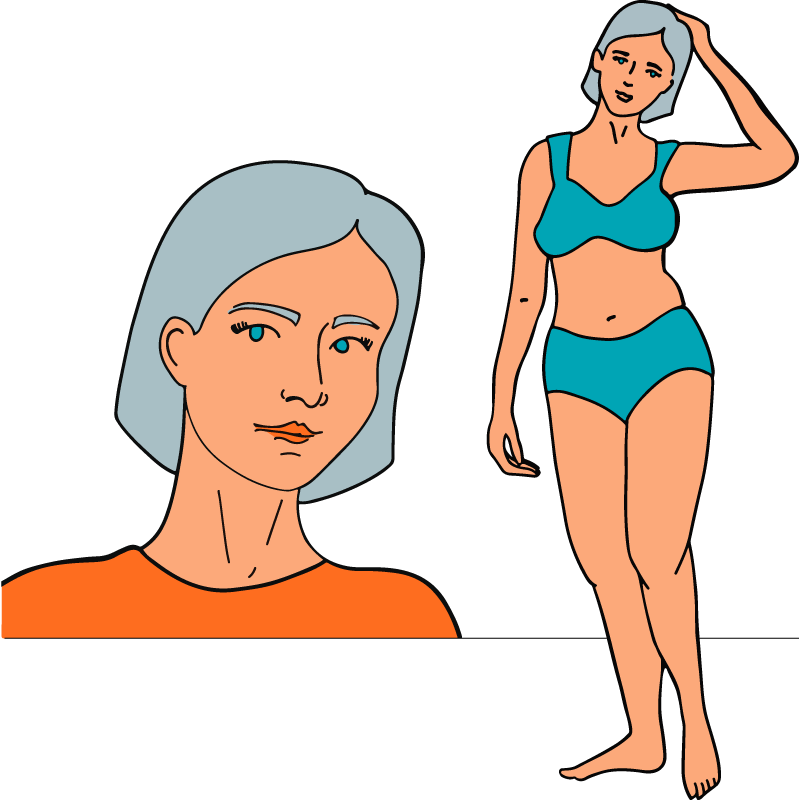


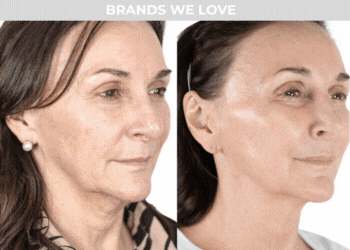





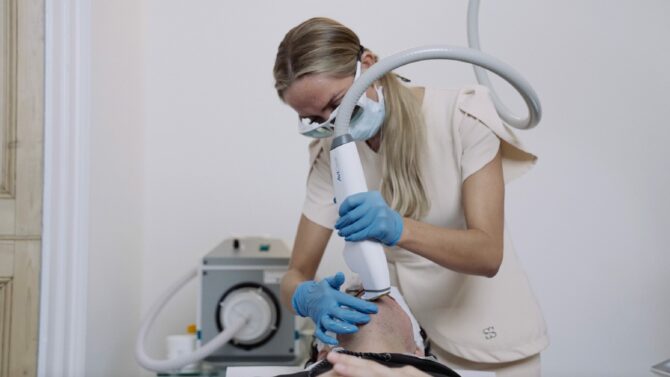
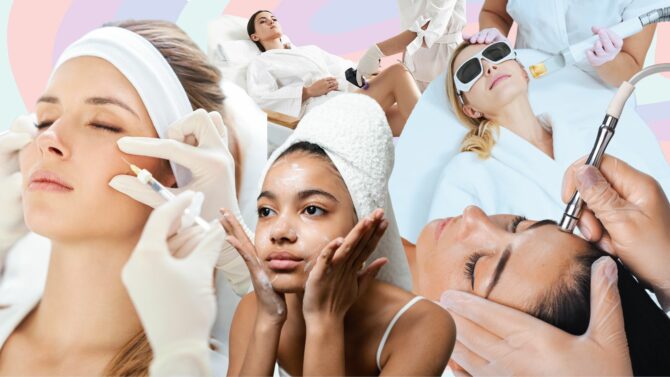
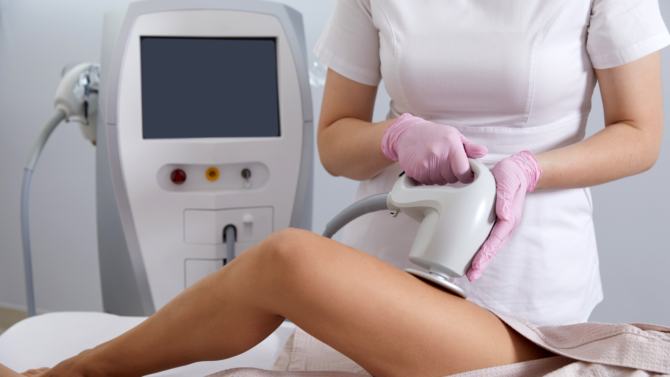
 The Tweakments Chatbot
The Tweakments Chatbot